A Study on the Borehole Wall Stability Analysis and Slurry Ratio Optimization for Construction of Pile in Complex Marine Strata
Abstract
:1. Introduction
2. Project Overview
2.1. Hydrogeological and Geological Engineering Conditions
2.2. Excavation-Pit Drilling Pile Construction Plan
3. Causes of Borehole Wall Collapse and Analysis of Wall Stability
4. Optimization of Mud Slurry Mix Ratio and Performance Testing Experiment
4.1. Experimental Design
4.1.1. Experimental Materials
4.1.2. Experimental Equipment
4.2. Results of Mud Slurry Mix Ratio Testing and Material Characteristics Analysis
4.2.1. Effects of Clay and Bentonite Content
4.2.2. Influence of Water Content
4.2.3. Influence of Slurry Additives
4.3. Optimization of Slurry Proportioning
4.3.1. Analysis of the Specific Gravity Parameters of Slurry
4.3.2. Analysis of Slurry Viscosity Parameters
4.3.3. Optimization of Slurry Proportioning
- (1)
- Water–clay–bentonite–CMC-Na–carbonate = 800:110:90:2:0.5
- (2)
- Water–clay–bentonite–CMC-Na–carbonate = 700:110:90:1.5:0.5
- (3)
- Water–clay–bentonite–polyacrylic acid sodium–carbonate = 800:110:90:1:0.5
5. Establishment of Calculation Model and Parameter Testing
5.1. Slurry Discrete Element Model
5.1.1. Slurry Discrete Element Model
5.1.2. Slurry Viscosity Test Simulation
- Mud-particle density has almost no influence on the falling time of the small ball.
- The ratio of the stiffness of mud particles in contact with each other to the stiffness of the wall has a significant impact on the falling speed of the small ball when the wall is removed. The larger the ratio of mud-particle stiffness to wall stiffness, the faster the initial falling speed of the small ball. When the wall contact stiffness is too large, the small ball does not fall under its own weight. However, after the small ball stabilizes, the wall stiffness has almost no impact on the falling of the small ball.
- The larger the viscous damping coefficient of mud particles, the slower the falling of mud particles, but the influence of the viscous damping coefficient on the falling of mud particles is relatively small. The viscous damping coefficient was set to 0.6, resulting in a filling time that was only 0.5 s longer than when it was set to 0.2.
- The local damping coefficient of mud particles has a significant influence on the filling time of falling. When the local damping coefficient was set to 0, the filling time was only 1.5 s. However, when the local damping coefficient was set to a value between 0.65 s and 0.92 s, the filling time could reach between 13 s and 58 s. The influence of the local damping coefficient of mud particles on viscosity is shown in Figure 12.
5.1.3. Mud-Particle Fluid Characteristics Test
5.2. Slurry–Soil Interaction: Discrete Element Model
5.3. Drill Hole Collapse Phenomenon
6. Simulation Analysis of Mud Wall
6.1. Influence of Mud Viscosity
6.2. Influence of Mud Specific Gravity
6.3. Influence of Mud Pressure inside the Hole
6.4. Influence of Drilling Spacing
7. Field Test Result and Discussion
7.1. Field Test of the Optimal Ratio of Chemical Mud
7.2. Discussion on Action Mechanism of Chemical Mud
8. Guidelines for Engineering Practice
- (1)
- To safeguard slurry walls, use high-viscosity mud to stabilize the sand-layer hole wall. This high-viscosity mud can significantly increase the mud force, eliminating the uneven deformation of the hole wall and limiting mud penetration. It is vital to remember that higher-viscosity mud can improve project performance, but it also increases building complexity. As a result, it is critical to develop a suitable viscosity range throughout project implementation in order to properly exploit the mud’s viscosity properties.
- (2)
- The proportion of mud has a direct relationship with sand layer collapse and clay layer contraction. These problems are most noticeable in the middle and lower sections of the borehole. Increasing the proportion of mud can effectively reduce the deformation of the borehole wall and enhance its stability.
- (3)
- Numerical simulations have indicated that the mud pressure within the hole must be carefully regulated. When generating a mud wall in the gravel–sand layer, excessively low mud pressure in the hole cannot adequately balance the deep soil pressure, relying solely on the self-weight of the mud. Conversely, excessively high mud pressure in the hole can promote the diffusion of mud particles in the gravel–sand layer, leading to unfavorable conditions.
- (4)
- During drilling construction, it is crucial to establish reasonable drilling spacing based on the actual situation. Additionally, the construction organization arrangement of the slurry-retaining wall-drilling pile should be planned in accordance with the spacing to prevent deviations in the drilling position, caused by large drilling spacing.
- (5)
- The addition of CMC-Na to the mud enables effective control of the collapse of cast-in-place piles in marine sand-bearing formations. This treatment method addresses hole collapse without altering the original construction technology. Furthermore, the low cost of CMC-Na yields significant economic benefits, making it a viable solution for widespread implementation in projects.
9. Conclusions
- (1)
- Based on the theory of circular borehole expansion, the borehole wall’s stability is determined using two parameters, which are mud slurry stability and mud-film stability. These define the safety factor for borehole wall stability under the influence of mud slurry. An analysis based on engineering practices examines the influencing factors on borehole wall stability and outlines the characteristics of borehole instability in varying geological conditions.
- (2)
- Elevating the content of solid-phase components (such as clay and bentonite) notably increases the mud slurry’s density. With increasing water content, the density, viscosity and sand content of the mud slurry decrease. Additives like sodium carboxymethyl cellulose and sodium polyacrylate primarily boost mud slurry viscosity. Sodium polyacrylate also exhibits significant flocculation properties, whereas barium sulfate primarily enhances the density. Three optimized schemes for mud slurry proportion are proposed based on similar construction cases.
- (3)
- The created mud slurry fluid model adequately simulates density, viscosity, and other fluid parameters. In the gravel–sand layers of marine strata, the significant incursion of mud slurry particles produces uneven borehole wall deformation, which ultimately leads to hole collapse. In contrast, in the powdery clay layers, restricted mud slurry invasion causes consistent borehole wall deformation, resulting in hole shrinkage.
- (4)
- Increased mud slurry viscosity minimizes radial displacement in borehole walls inside gravel–sand layers. As viscosity increases, radial displacement becomes more uniform. However, increasing viscosity increases building difficulties, underlining the importance of determining an ideal viscosity range in practical engineering.
- (5)
- Maintaining proper mud slurry pressure and spacing is crucial during drilling operations. The inadequate mud slurry pressure, which is exclusively dependent on the mud slurry weight, fails to balance the deep soil pressure. Increased mud slurry density greatly lowers drill-wall radial displacement. Excessive mud slurry pressure causes mud slurry particles to diffuse in gravel–sand layers, resulting in undesirable conditions. Furthermore, when the drilling spacing is too tiny, the hole deviates towards the center point, whereas when it is too large, the drilling position deviates.
- (6)
- Through the on-site chemical mud-wall-protection experiment of bored piles in a sand layer, it is concluded that CMC-Na chemical mud can effectively prevent the collapse of the hole and reduce the sand content at the bottom of the hole.
Author Contributions
Funding
Institutional Review Board Statement
Informed Consent Statement
Data Availability Statement
Conflicts of Interest
References
- Liao, S.; Wei, S.; Tan, Y.; Liu, J. Measured Analysis of Deformation Traits of Large-Scale Deep Foundation Pits in Suzhou. J. Geotech. Eng. 2015, 37, 458–469. [Google Scholar]
- Xie, X. Stability Analysis of Borehole Wall Based on Unified Strength Theory. Master’s Thesis, Zhejiang University, Hangzhou, China, 2013. [Google Scholar]
- Ahmad, H.M.; Kamal, M.S.; Al-Harthi, M.A. Effect of Thermal Aging and Electrolyte on Bentonite Dispersions: Rheology and Morphological Properties. J. Mol. Liq. 2018, 269, 278–286. [Google Scholar] [CrossRef]
- Koh, J.K.; Lai, C.W.; Johan, M.R.; Gan, S.S.; Chua, W.W. Recent Advances of Modified Polyacrylamide in Drilling Technology. J. Pet. Sci. Eng. 2022, 215, 110566. [Google Scholar] [CrossRef]
- Gothäll, R.; Stille, H. Fracture Dilation During Grouting. Tunn. Undergr. Space Technol. 2009, 24, 126–135. [Google Scholar] [CrossRef]
- Wang, Y.; Chen, S.; Ouyang, J.; Li, J.; Zhao, Y.; Lin, H.; Guo, P. Predicting Ground Surface Settlements Induced by Deep Excavation under Embankment Surcharge Load in Flood Detention Zone. Water 2022, 14, 3868. [Google Scholar] [CrossRef]
- Gao, Q.; Hu, Q.; Zhang, J.; Ren, Z.; Liu, C.; Liu, J.; Wang, S.; Cheng, G.; Zhang, R.; Ren, C. Experimental Study on Wall-Protecting Mud Modification of Super-Long Bored Pile in the Alluvial Plain Region of the Yellow River. Constr. Build. Mater. 2023, 368, 130395. [Google Scholar] [CrossRef]
- Gamal, H.; Elkatatny, S.; Adebayo, A. Influence of Mud Filtrate on the Pore System of Different Sandstone Rocks. J. Pet. Sci. Eng. 2021, 202, 108595. [Google Scholar] [CrossRef]
- Zhang, E.; Xu, Y.; Fei, Y.; Shen, X.; Zhao, L.; Huang, L. Influence of the Dominant Fracture and Slurry Viscosity on the Slurry Diffusion Law in Fractured Aquifers. Int. J. Rock Mech. Min. Sci. 2021, 141, 104731. [Google Scholar] [CrossRef]
- Liu, Y.; Li, X.; Tu, Y.; Lu, Y. Mining Leachates Effect on the Hydraulic Performance of Geosynthetic Clay Liners under Different Temperatures. Water 2023, 15, 1132. [Google Scholar] [CrossRef]
- Wang, X.; Wan, W.; Liu, Y.; Gao, R.; Lu, Z.; Tang, X. Analysis of Factors Influencing the Flow Characteristics of Paste Backfill in Pipeline Transportation. Sustainability 2023, 15, 6904. [Google Scholar] [CrossRef]
- Dastpak, P.; Abrishami, S.; Sharifi, S.; Tabaroei, A. Experimental Study on the Behavior of Eccentrically Loaded Circular Footing Model Resting on Reinforced Sand. Geotext. Geomembr. 2020, 48, 647–654. [Google Scholar] [CrossRef]
- Ren, S.; Zhao, Y.; Liao, J.; Liu, Q.; Li, Y. Lugeon Test and Grouting Application Research Based on Rqd of Grouting Sections. Sustainability 2022, 14, 12748. [Google Scholar] [CrossRef]
- Li, F.; Guo, P.; Geng, N.; Mao, L.; Lin, F.; Zhao, Y.; Lin, H.; Wang, Y. Stability of Braced Excavation Underneath Crossing Underground Large Pressurized Pipelines. Water 2022, 14, 3867. [Google Scholar] [CrossRef]
- Xiao, F.; Shang, J.; Zhao, Z. Dda Based Grouting Prediction and Linkage between Fracture Aperture Distribution and Grouting Characteristics. Comput. Geotech. 2019, 112, 350–369. [Google Scholar] [CrossRef]
- Liu, J.X.; Liu, J.; Zhu, W.C.; Tang, C.A.; Yang, T.H.; Sheng, J.C.; Brady, B.H. Simulation of Borehole Failure with Impact of Mud Permeation at Multilateral Junction; SPE: Perth, Australia, 2004. [Google Scholar]
- Chen, C.; Peng, Z.; Gu, J.; Peng, Y.; Huang, X.; Wu, L. Exploring Environmentally Friendly Biopolymer Material Effect on Soil Tensile and Compressive Behavior. Int. J. Environ. Res. Public. Health 2020, 17, 9032. [Google Scholar] [CrossRef] [PubMed]
- Chen, S.; Guo, P.; Ma, J.; Li, X.; Lin, H.; Zhao, Y.; Wang, Y. Soil Heterogeneity Effects on Bridge Piles Deformation under Shield Tunnelling Disturbance. Sustainability 2022, 14, 16854. [Google Scholar] [CrossRef]
- Sarfarazi, V.; Tabaroei, A.; Asgari, K. Discrete Element Modeling of Strip Footing on Geogrid-Reinforced Soil. Geomech. Eng. A 2022, 29, 435–449. [Google Scholar]
- Jamshidi, E.; Amani, M. Numerical Wellbore Stability Analysis Using Discrete Element Models. Pet. Sci. Technol. 2014, 32, 974–982. [Google Scholar] [CrossRef]
- Boschi, K.; di Prisco, C.G.; Ciantia, M.O. Micromechanical Investigation of Grouting in Soils. Int. J. Solids Struct. 2020, 187, 121–132. [Google Scholar] [CrossRef]
- Fu, Y.; Zeng, D.; Li, D.; Lu, A.; Qiao, G.; Xiong, H. Study on the Diffusion Mechanism of Sandy Soil Grouting Based on the Discrete Element Method. J. Civil. Eng. 2020, 53, 355–360. [Google Scholar]
- Gökçe, H.S.; Andiç-Çakır, Ö. Bleeding Characteristics of High Consistency Heavyweight Concrete Mixtures. Constr. Build. Mater. 2019, 194, 153–160. [Google Scholar] [CrossRef]
- Yang, X.; Liu, W. Research on Mud Mixing Method for Bored Piles in Unstable Soil Layer. Eng. Technol. Res. 2021, 6, 162–163. [Google Scholar]
- Sun, C.; Sun, M.; Tao, T.; Qu, F.; Wang, G.; Zhang, P.; Li, Y.; Duan, J. Chloride Binding Capacity and its Effect on the Microstructure of Mortar Made with Marine Sand. Sustainability 2021, 13, 4169. [Google Scholar] [CrossRef]
- Li, R.; Yin, Z.; Lin, H. Research Status and Prospects for the Utilization of Lead–Zinc Tailings as Building Materials. Buildings 2023, 13, 150. [Google Scholar] [CrossRef]
- Yin, Z.; Li, R.; Lin, H.; Chen, Y.; Wang, Y.; Zhao, Y. Analysis of Influencing Factors of Cementitious Material Properties of Lead–Zinc Tailings Based on Orthogonal Tests. Materials 2023, 16, 361. [Google Scholar] [CrossRef] [PubMed]
- Kai, C.; Zhang, F.; Cheng, C.; Chen, Q. Design Synthesis and Performance of Anti-Collapse Drilling Polymer Mud with Higher Stability. Pigm. Resin. Technol. 2021, 51, 101–109. [Google Scholar] [CrossRef]
- Wei, L.; Zhang, Q.; Deng, Z. Stabilisation Mechanism and Application of Large-Scale Mud-Water Shield Tunnels. J. Undergr. Space Eng. 2007, 3, 87–91. [Google Scholar]
- Zhang, X.; Wan, Z.; Wan, C.; Liu, Y.; Liu, S. Optimisation of Thixotropic Mud Ratio and Resistance Reduction Performance Test for Rectangular Pipe Jacking in Anhydrous Sand Layer. J. Eng. Geo 2021, 29, 1611–1620. [Google Scholar]
- Biot, M.A. General Theory of Three-Dimensional Consolidation. J. Appl. Phys. 1941, 12, 155–164. [Google Scholar] [CrossRef]
- Yang, D. Analysis of Collapsing Factors and Stability Evaluation of Large Borehole Diameter Drilled Piles; Qingdao University of Science and Technology: Qingdao, China, 2014. [Google Scholar]
- Ma, Y.; Zhou, D.; Zhang, Z.; Qian, M. Measurement of Collapsed Hole of Drilled Piles and Evaluation of Hole Wall Stability. People’s Yangtze River 2017, 48, 79–84+96. [Google Scholar]
- T/CECS 592-2019; Technical Standard for Construction of Bored Pile. China Building Industry Press: Beijing, China, 2019.
- Zhang, J.; Abrishami, S. Method of Controlling Construction for Bore Riling Pile. Public Commun. Sci. Technol. 2011, 128, 127. [Google Scholar]
- Peng, G. Analysis of Bored Pile Drilling Method. Heilongjiang Sci. Technol. Inf. 2011, 267. [Google Scholar]
- Shi, F. Application of Polyacrylamide in Drilling. China Pet. Chem. Stand. Qual. 2012, 32, 39. [Google Scholar]
- Liu, S.; Zhang, B.; Zhang, X.; Fan, D.; Wang, H.; Yu, M. Formulation Optimization and Performance Analysis of the Thixotropic Slurry for Large-Section Rectangular Pipe Jacking in Anhydrous Sand. Constr. Build. Mater. 2022, 357, 129380. [Google Scholar] [CrossRef]
- Li, B.; Chen, Y.; Chen, J. Modeling of Soil–Claw Interaction Using the Discrete Element Method (Dem). Soil. Tillage Res. 2016, 158, 177–185. [Google Scholar] [CrossRef]
- Farkas, M.P.; Dankó, G.; Yoon, J.S.; Zang, A.; Zimmermann, G.; Stephansson, O. Interpreting Multistage Minifrac Tests Using Discrete Element Modeling of Foliated Rock with Various Drilling Mud Properties. Procedia Eng. 2017, 191, 233–241. [Google Scholar] [CrossRef]
- Liu, S.; Nie, Y.; Hu, W.; Ashiru, M.; Li, Z.; Zuo, J. The Influence of Mixing Degree between Coarse and Fine Particles on the Strength of Offshore and Coast Foundations. Sustainability 2022, 14, 9177. [Google Scholar] [CrossRef]
- BASF, N.D. Basf Launches Master Builders Solutions Professional Tradies Range. Constr. Eng. Aust. Epc Media Group 2014, 1, 14–15. [Google Scholar]
- Chik, Z.; Vallejo, L.E. Characterization of the Angle of Repose of Binary Granular Materials. Can. Geotech. J. 2005, 42, 683–692. [Google Scholar] [CrossRef]
- Wang, H.; Chen, J.; Liu, H.; Guo, L.; Lu, Y.; Su, X.; Zhu, Y.; Liu, T. Study on the Influence of Mud Properties on the Stability of Excavated Face of Slurry Shield and the Quality of Filter Cake Formation. J. Mar. Sci. Eng. 2020, 8, 291. [Google Scholar] [CrossRef]
- Min, F.; Du, J.; Zhang, N.; Chen, X.; Lv, H.; Liu, L.; Yu, C. Experimental Study on Property Change of Slurry and Filter Cake of Slurry Shield under Seawater Intrusion. Tunn. Undergr. Space Technol. 2019, 88, 290–299. [Google Scholar] [CrossRef]
- Zhu, G.; Bian, Y.; Hursthouse, A.S.; Xu, S.; Xiong, N.; Wan, P. The Role of Magnetic Mofs Nanoparticles in Enhanced Iron Coagulation of Aquatic Dissolved Organic Matter. Chemosphere 2020, 247, 125921. [Google Scholar] [CrossRef] [PubMed]
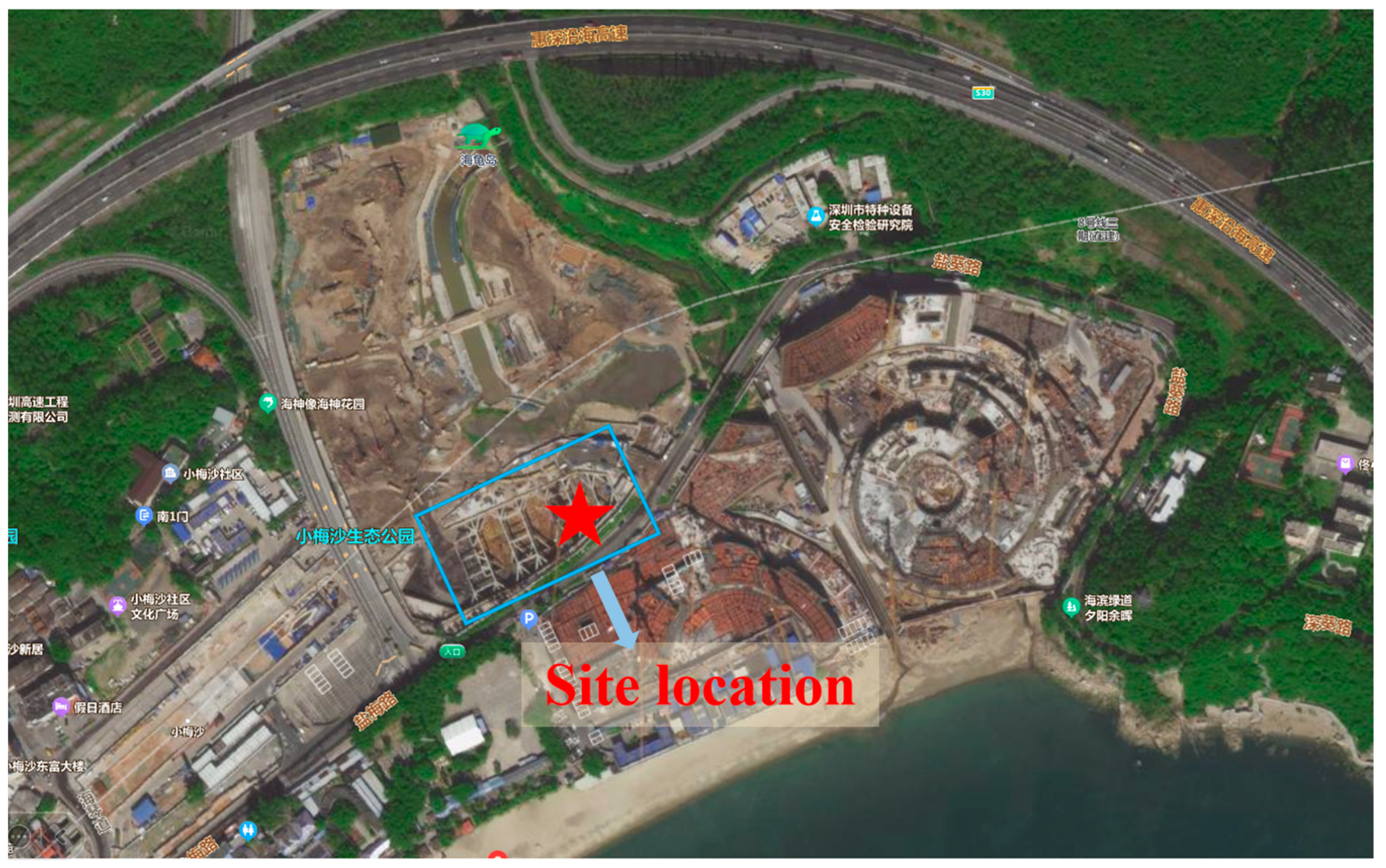
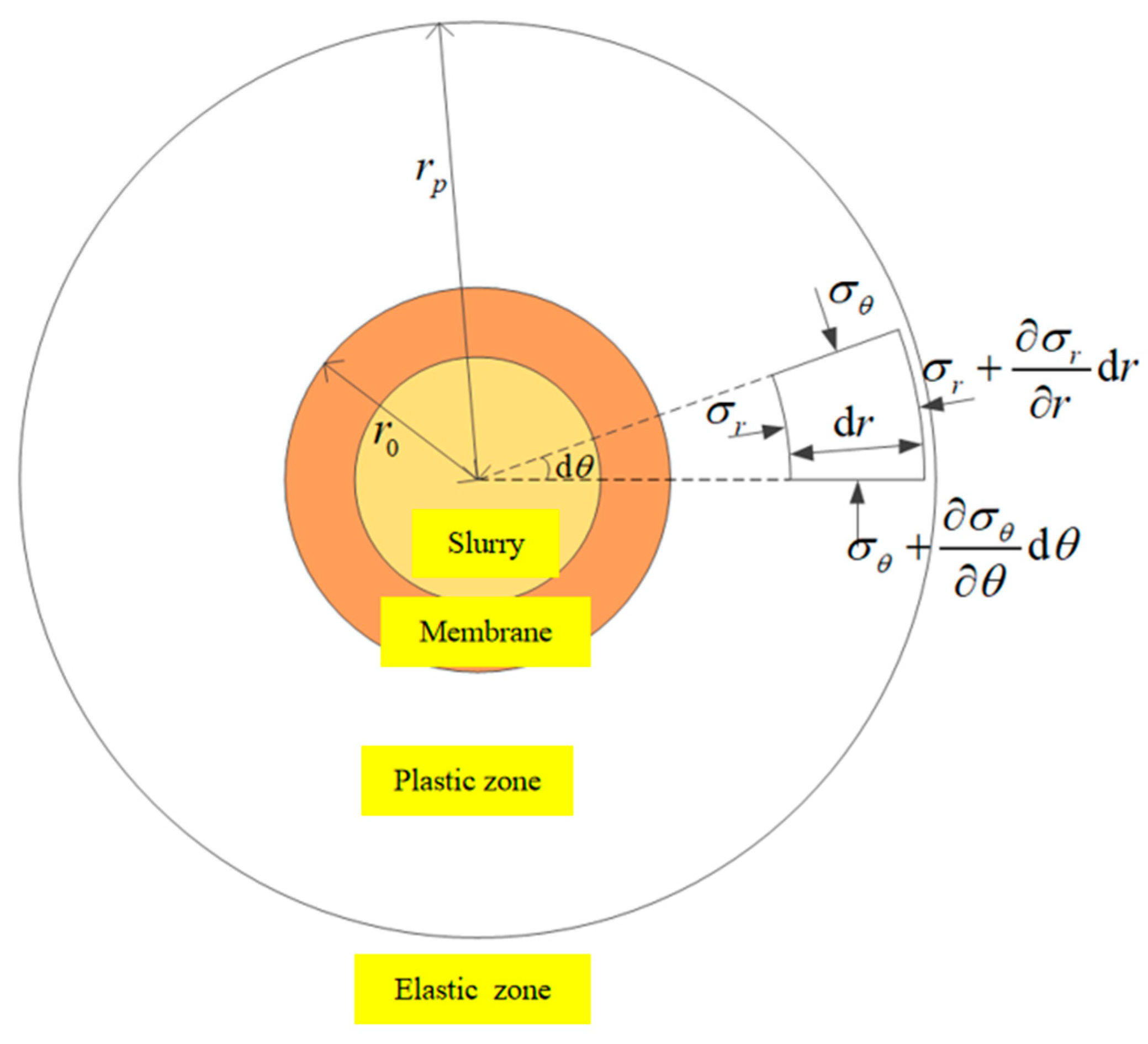



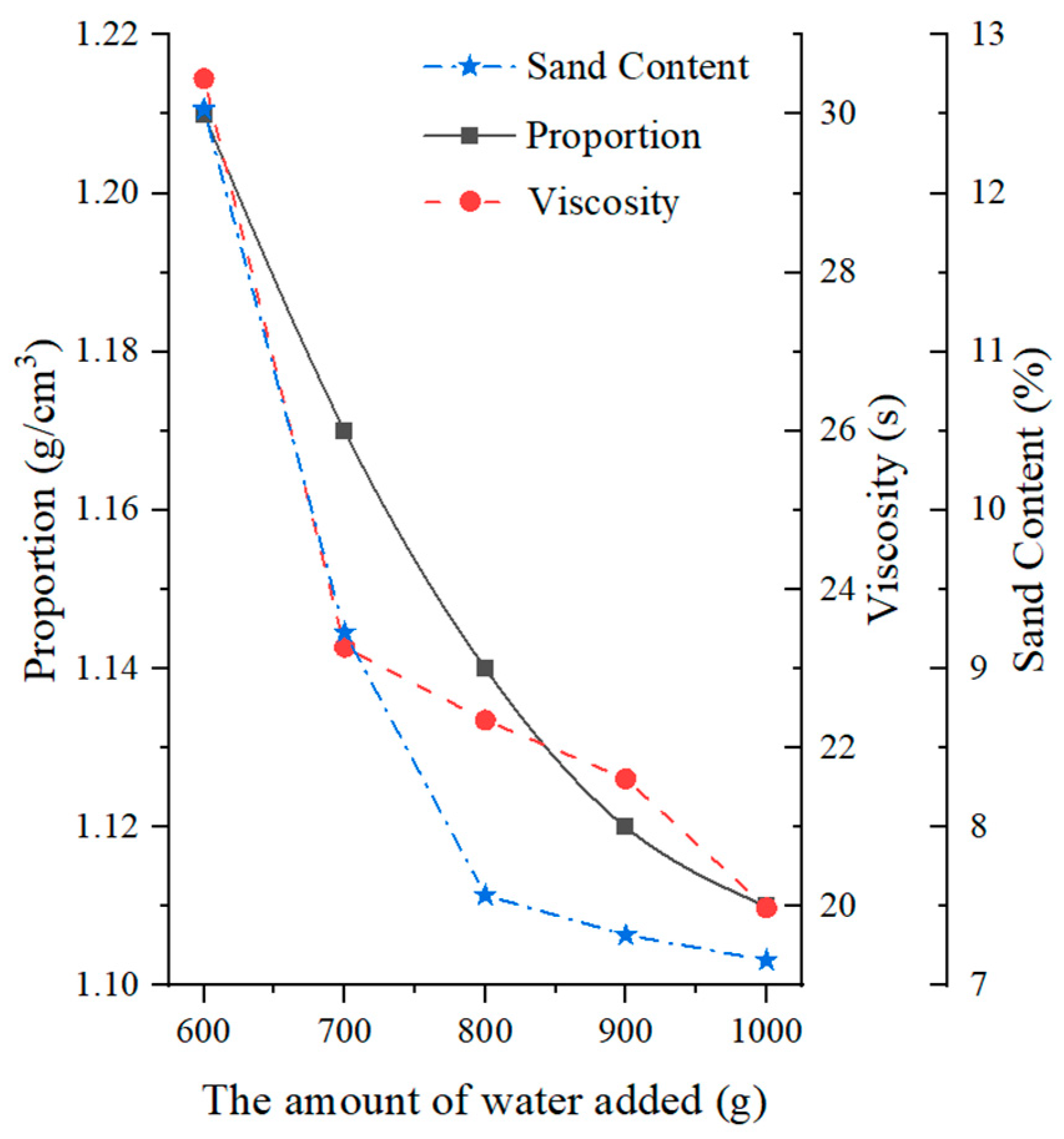

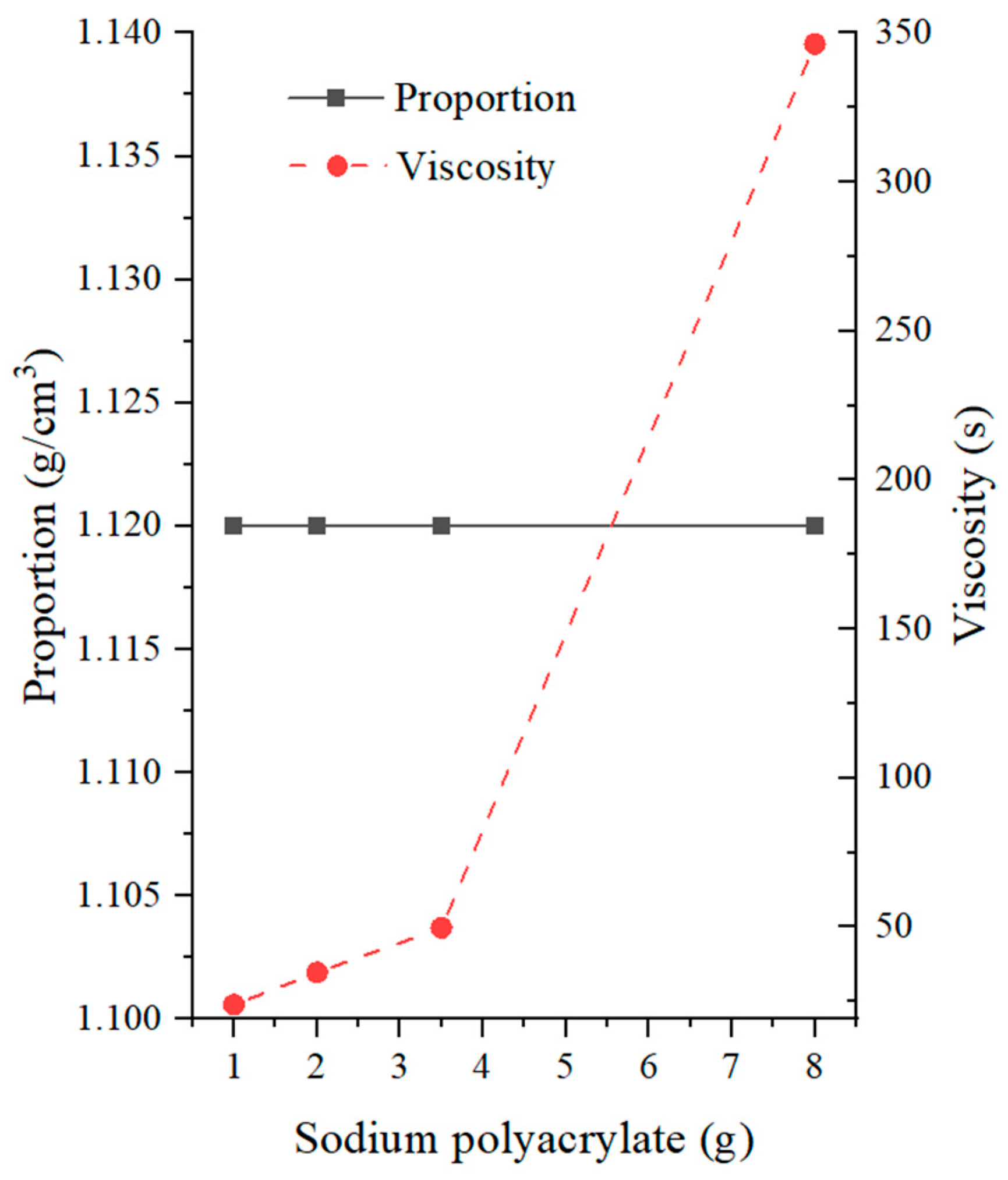

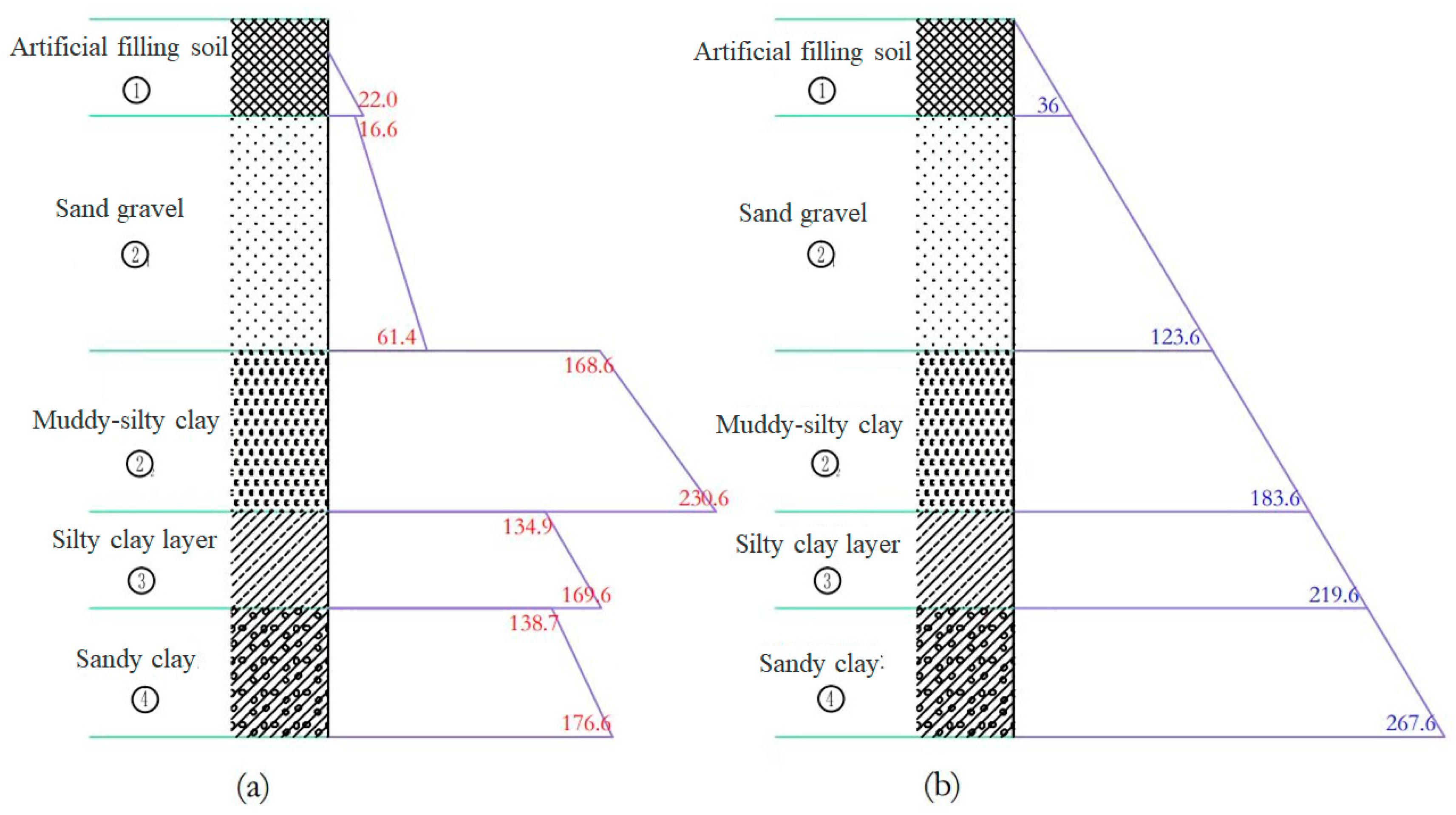
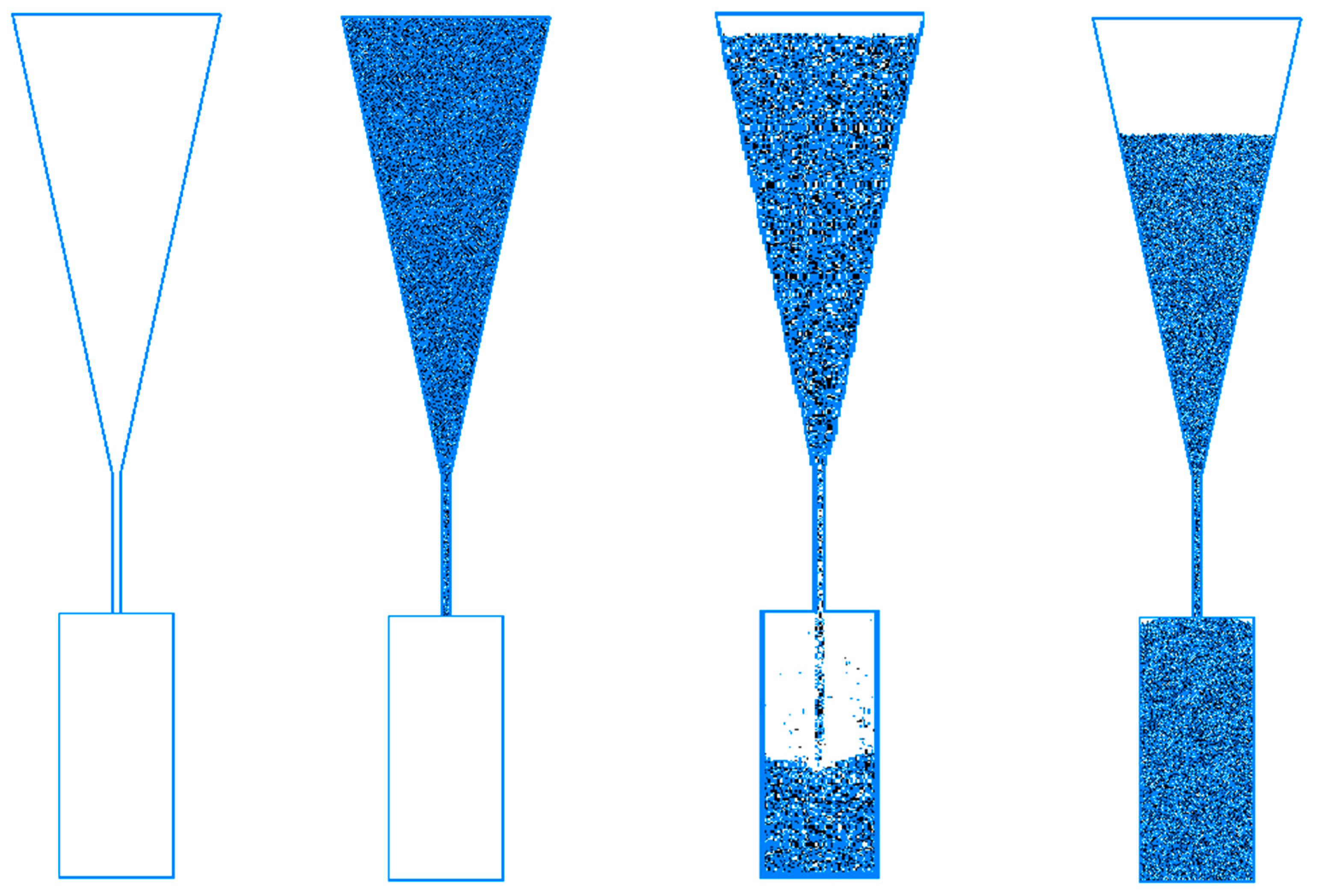



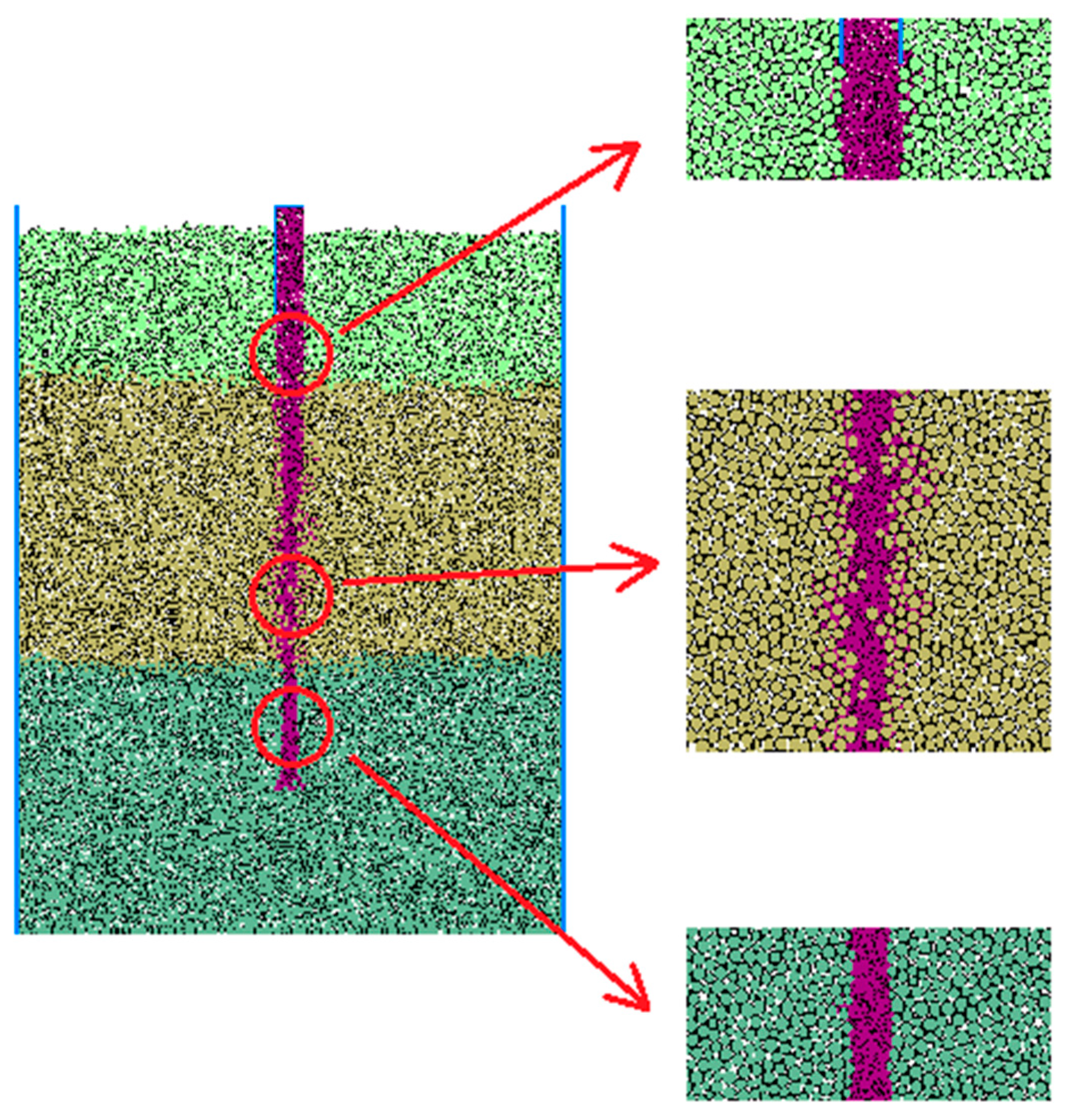

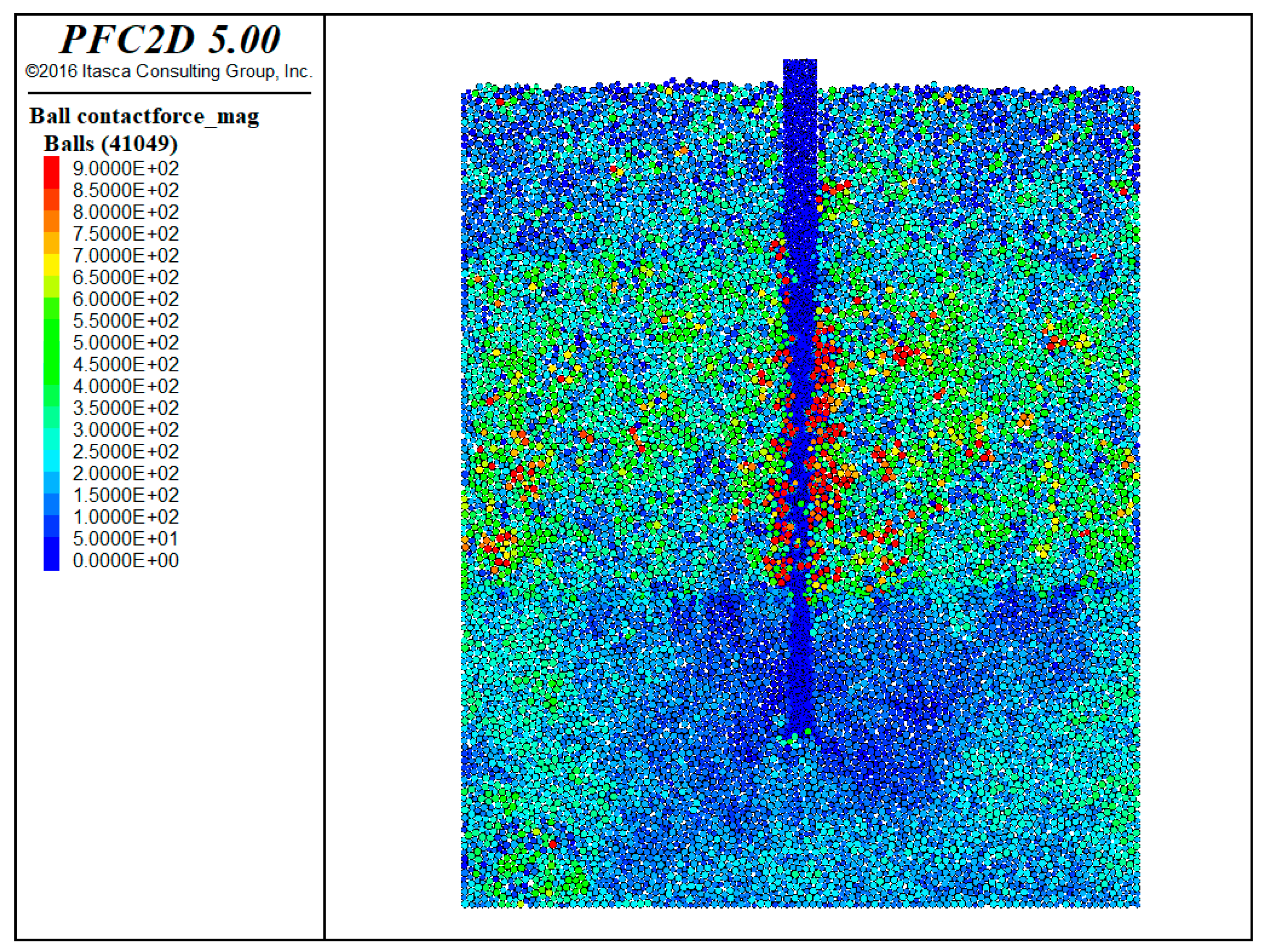

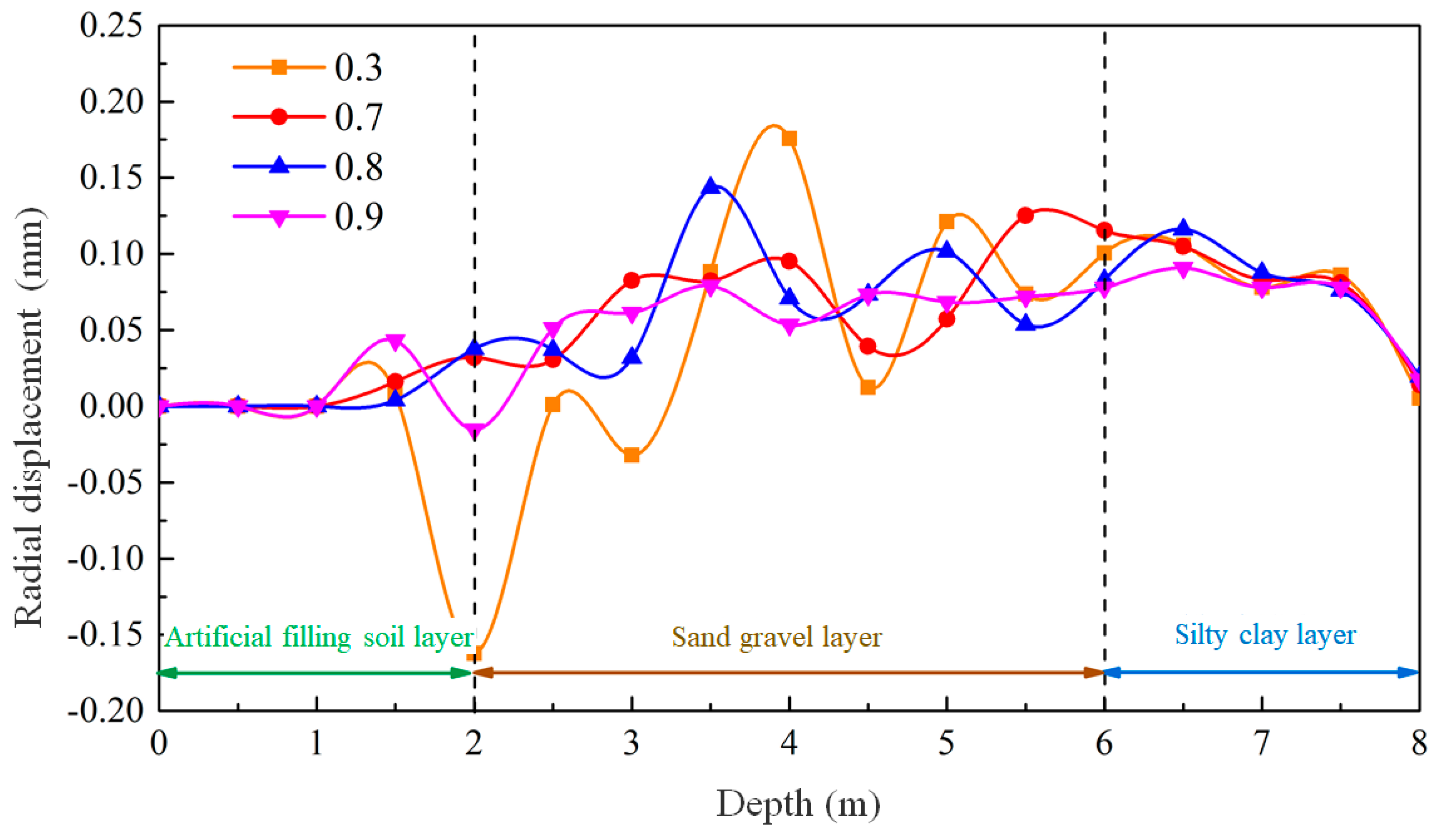

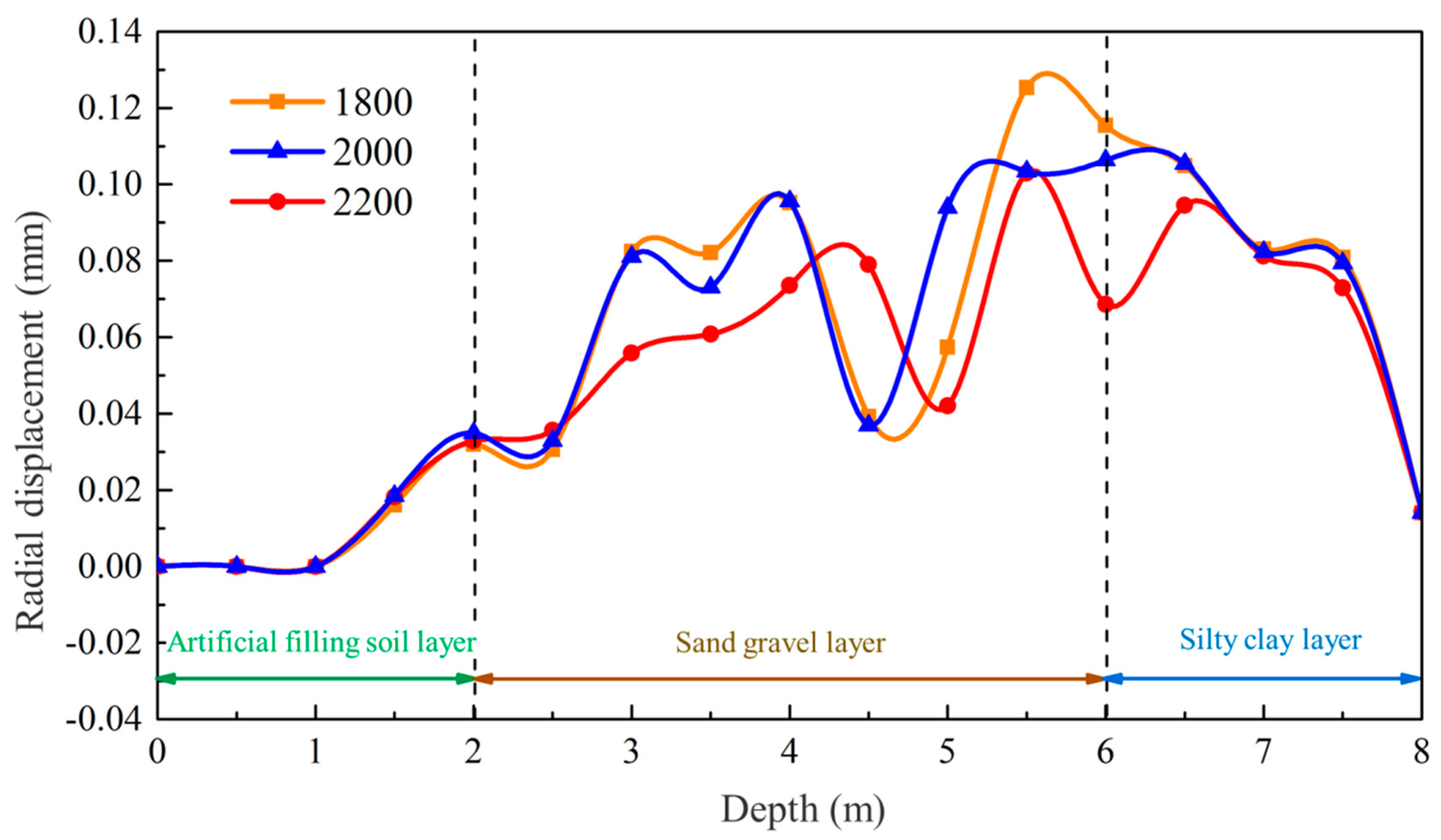
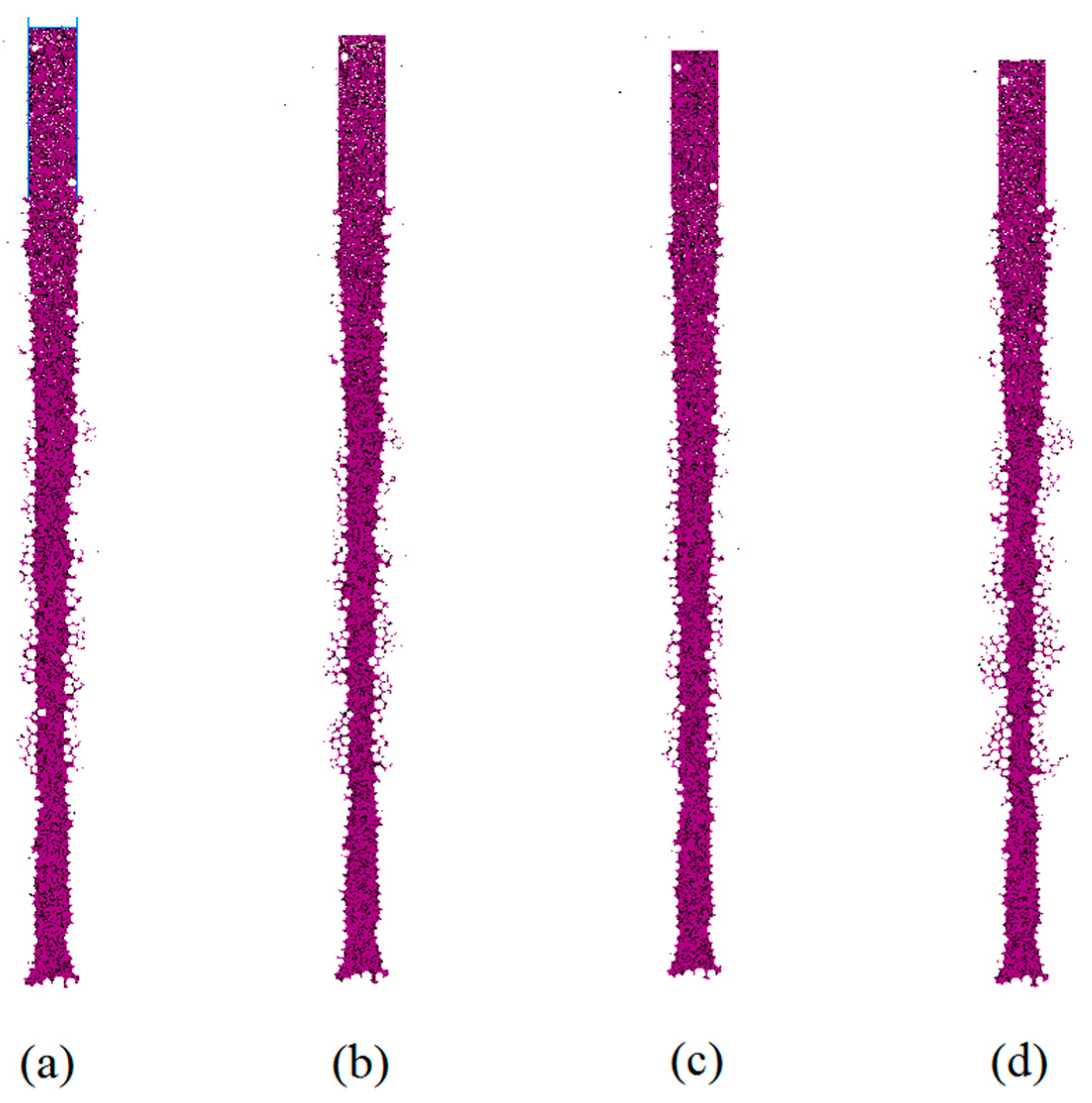
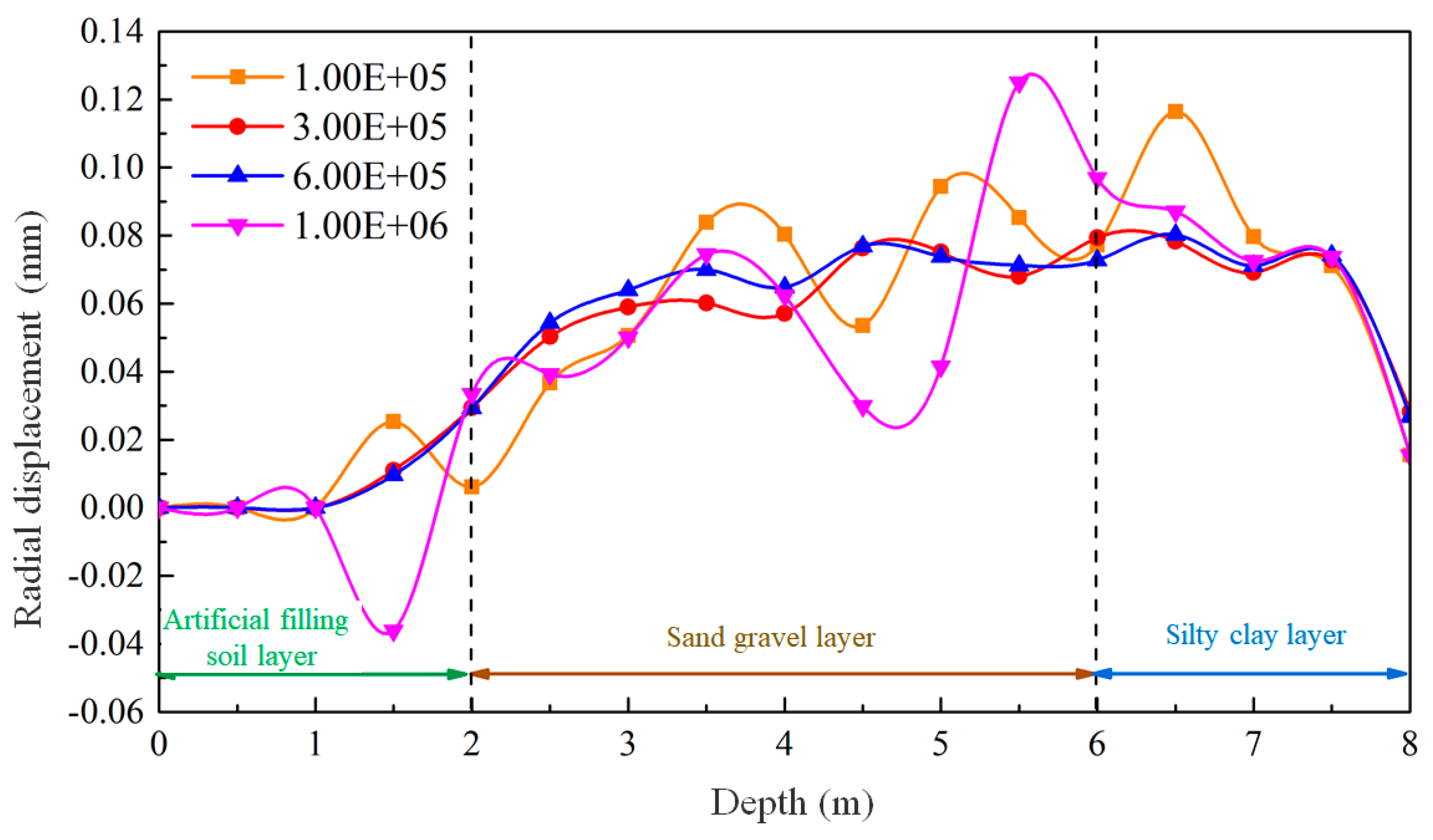


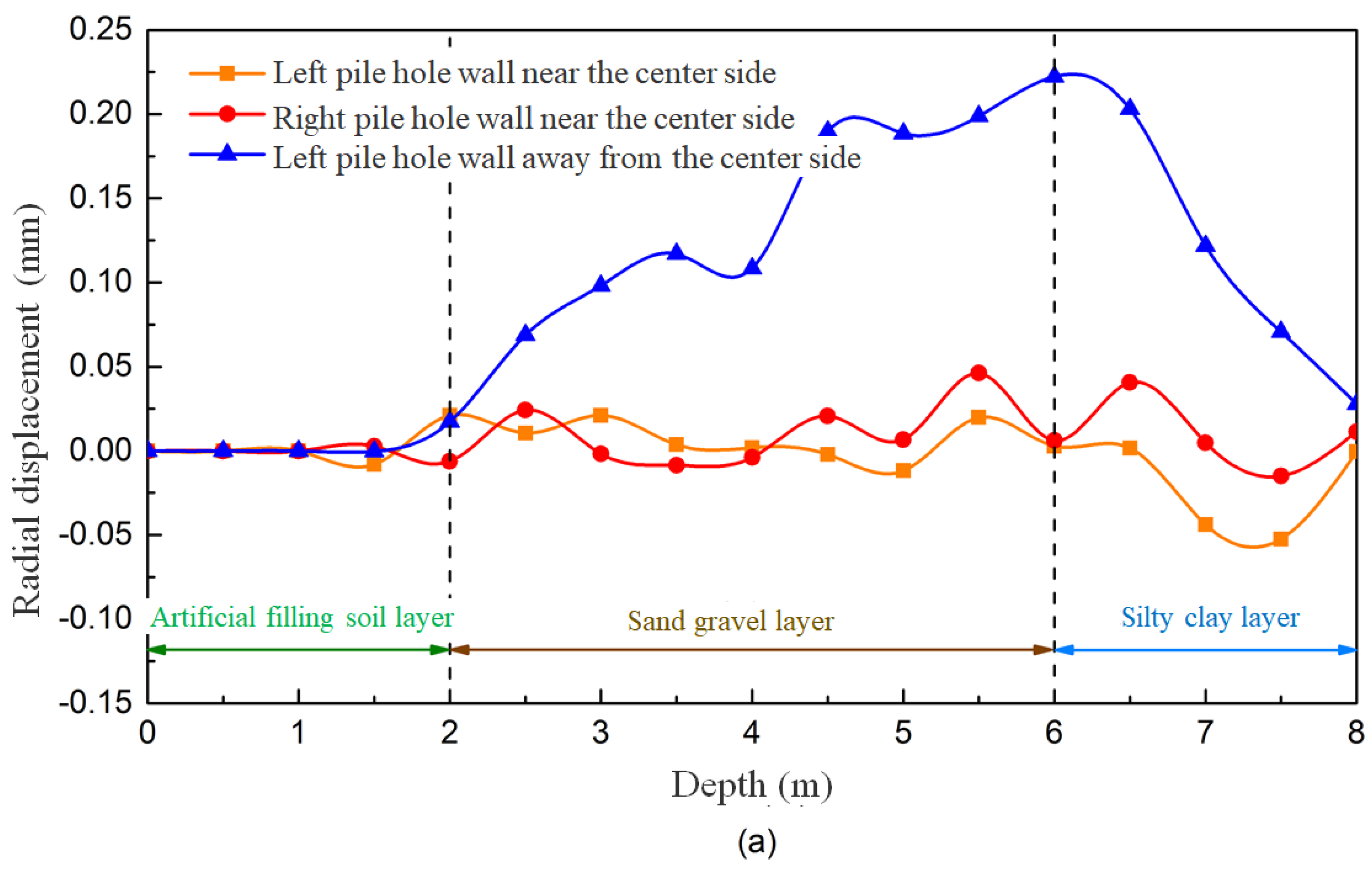

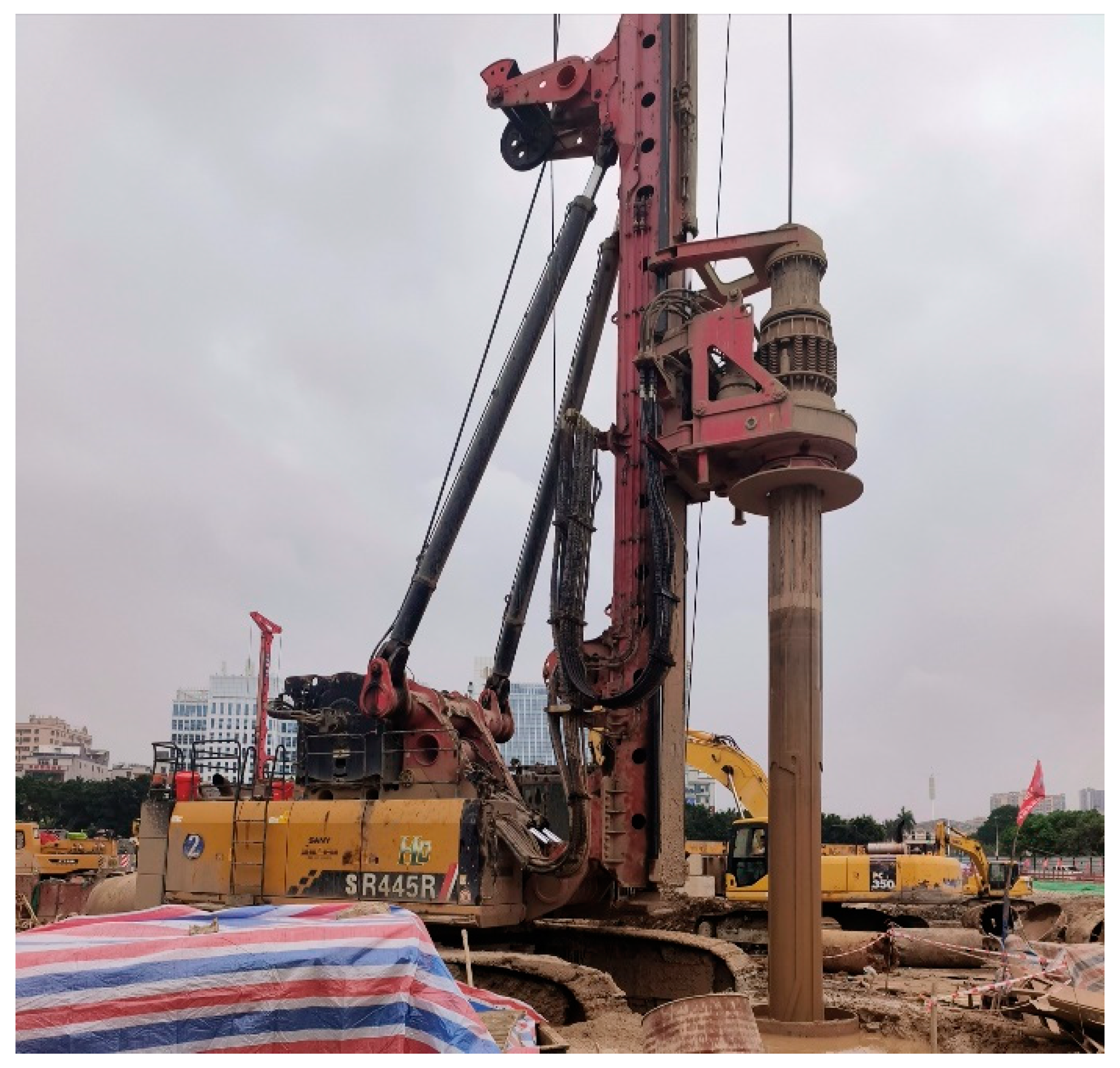
| Formation Name and Genetic Code | Layer Number | Soil State | Weight γ (kN/m3) | Consolidation Quick Shear | Critical Bond Strength Standard Value qsik (kPa) | Friction Coefficient μ of Grouted Body | |
|---|---|---|---|---|---|---|---|
| Internal Friction Angle φ (°) | Cohesion c (kPa) | ||||||
| Artificial fill (Qml) | 1 | Loose | 18.0 | 14 | 7 | 20 | 0.25 |
| Gravel–sand (Q4mc) | 2–1 | Loose to slightly dense | 20.0 | 32 | / | 60 | 0.4 |
| Silty clay (Q4mc) | 2–2 | Soft plastic to plastic | 16.0 | 3 | 6 | 14 | / |
| Silty clay (Q3al + pl) | 3 | Plastic to hard plastic | 19.0 | 14 | 23 | 60 | 0.25 |
| Sandy clay (Qel) | 4 | Plastic to hard plastic | 18.6 | 19 | 23 | 80 | 0.35 |
| Instrument Name | Unit, and Precision | Purpose |
|---|---|---|
| NB-1 Mud Specific Gravity Meter | g/cm3 (0.01 g/cm3) | Measure the specific gravity of mud |
| 1006 Mud Viscosity Meter | S (0.01 s) | Measure the viscosity of mud |
| NA-1 Mud Sand Content Meter | 0.01% | Measure the sand content of mud |
| pH test paper | Measure the pH value of mud | |
| Precision electronic scale | g | Weighing test materials |
| Microstirrer | r/min | Used for stirring mud |
| 65-mesh sieve | -- | Sieve the clay used for testing |
| Graduated cylinder, several beakers | several | Measure and hold liquid for volume measurement |
| Reference Number | Water (mL) | Clay (g) | Bentonite (g) | CMC-Na (g) | Sodium Carbonate (g) | Specific Gravity | Viscosity (s) | Sand Content (%) | PH |
|---|---|---|---|---|---|---|---|---|---|
| 1 | 800 | 0 | 50 | 1 | 0.5 | 1.04 | 18.35 | 0.10 | 9.5 |
| 2 | 800 | 20 | 50 | 1 | 0.5 | 1.05 | 18.69 | 0.60 | 9 |
| 3 | 800 | 40 | 50 | 1 | 0.5 | 1.06 | 20.39 | 2.25 | 9.5 |
| 4 | 800 | 60 | 50 | 1 | 0.5 | 1.08 | 20.07 | 2.50 | 9.5 |
| 5 | 800 | 80 | 50 | 1 | 0.5 | 1.10 | 21.35 | 3.50 | 9.5 |
| 6 | 800 | 100 | 50 | 1 | 0.5 | 1.11 | 20.34 | 4.50 | 9 |
| 7 | 800 | 50 | 0 | 1 | 0.5 | 1.03 | 17.43 | 2.00 | 9.5 |
| 8 | 800 | 50 | 20 | 1 | 0.5 | 1.04 | 17.87 | 1.80 | 9.5 |
| 9 | 800 | 50 | 40 | 1 | 0.5 | 1.07 | 18.54 | 2.10 | 9.5 |
| 10 | 800 | 50 | 60 | 1 | 0.5 | 1.08 | 19.36 | 1.60 | 8.8 |
| 11 | 800 | 50 | 80 | 1 | 0.5 | 1.10 | 21.04 | 2.70 | 8.5 |
| 12 | 800 | 50 | 100 | 1 | 0.6 | 1.12 | 20.47 | 3.00 | 9 |
| 13 | 600 | 110 | 90 | 1 | 0.5 | 1.21 | 30.45 | 12.53 | 8.5 |
| 14 | 700 | 110 | 90 | 1 | 0.5 | 1.17 | 23.27 | 9.23 | 9 |
| 15 | 800 | 110 | 90 | 1 | 0.5 | 1.14 | 22.35 | 7.57 | 8.5 |
| 16 | 900 | 110 | 90 | 1 | 0.5 | 1.12 | 21.61 | 7.32 | 8.5 |
| 17 | 1000 | 110 | 90 | 1 | 0.5 | 1.11 | 19.98 | 7.16 | 8.5 |
| 18 | 1000 | 110 | 90 | 1 | 0.5 | 1.11 | 19.92 | 7.12 | 8.5 |
| 19 | 1000 | 110 | 90 | 2 | 0.5 | 1.11 | 26.38 | 6.53 | 9 |
| 20 | 1000 | 110 | 90 | 3.5 | 0.5 | 1.13 | 31.04 | 7.65 | 9.6 |
| 21 | 1000 | 110 | 90 | 8 | 0.5 | 1.13 | 284.44 | 7.10 | 9 |
| Reference Number | Water (mL) | Clay (g) | Bentonite (g) | Sodium Polyacrylate (g) | Sodium Carbonate (g) | Specific Gravity | Viscosity (s) | Sand Content (%) | PH |
|---|---|---|---|---|---|---|---|---|---|
| 22 | 1000 | 110 | 90 | 1 | 0.5 | 1.12 | 23.96 | 30.27 | 9 |
| 23 | 1000 | 110 | 90 | 2 | 0.5 | 1.12 | 34.74 | -- | 9.5 |
| 24 | 1000 | 110 | 90 | 3.5 | 0.5 | 1.12 | 49.71 | -- | 9.1 |
| 25 | 1000 | 110 | 90 | 8 | 0.5 | 1.12 | 346.25 | -- | 9.5 |
| Reference Number | Water (mL) | Clay (g) | Bentonite (g) | Barium Sulfate (g) | Sodium Carbonate (g) | Specific Gravity | Viscosity (s) | Sand Content (%) | PH |
|---|---|---|---|---|---|---|---|---|---|
| 26 | 1000 | 110 | 90 | 15 | 0.5 | 1.13 | 21.47 | 7.12 | 9.2 |
| 27 | 1000 | 110 | 90 | 60 | 0.5 | 1.16 | 30.66 | 7.37 | 9.5 |
| 28 | 1000 | 110 | 90 | 100 | 0.5 | 1.18 | 34.41 | 9.16 | 9.5 |
| 29 | 1000 | 110 | 90 | 150 | 0.5 | 1.21 | 38.49 | 11.35 | 9.5 |
| Project Name | Formation Used | Slurry Materials | Slurry Viscosity |
|---|---|---|---|
| Cambodia Bassac River East Channel Bridge | Fine sand formation | Clay, bentonite, CMC-Na, sodium carbonate, water | 18–25 s |
| Wuhan Erqi Changjiang River Bridge supporting project | Thick sand formation | Bentonite, CMC-Na, sodium carbonate, water | 25–28 s |
| Yu Men Kou Yellow River Highway Bridge project | Saturated liquefied sand formation | Bentonite, polyacrylamide, sodium carbonate, water | 26–35 s |
| Hong Kong-Zhuhai-Macao Bridge Lingdingyang West Beach project | Sand formation | Bentonite, CMC-Na, polyacrylamide, sodium carbonate, water | 22 s |
| Model Type | ||||
|---|---|---|---|---|
| Parameter Value | 3.2 × 105 | 0 | 0.2 | 0 |
| Local Damping Coefficient | 0 | 0.3 | 0.5 | 0.6 | 0.7 | 0.8 | 0.9 |
|---|---|---|---|---|---|---|---|
| Repose angle (°) | 5 | 5.6 | 6.2 | 6.8 | 7.5 | 7.8 | 8.1 |
| Soil Layer | Model Type | kn | ks | fric | dp_nratio | pb_kn | pb_ks | pb_ten | pb_coh | pb_rmul | dp_sratio | cb_tenf | cb_shearf |
|---|---|---|---|---|---|---|---|---|---|---|---|---|---|
| artificial fill | linearcbond | 3 × 106 | - | 0.2 | 0.2 | - | - | - | - | - | 0 | 1 × 1010 | 1 × 1010 |
| gravel | linear | 5 × 106 | - | 0.3 | 0.2 | - | - | - | - | - | 0 | - | - |
| silty clay | linearpbond | 3 × 106 | 3 × 106 | 0.2 | 0.2 | 1 × 108 | 1 × 108 | 1 × 106 | 1 × 106 | 0.8 | - | - | - |
| slurry–soil | linear | 3 × 105 | 3 × 105 | 0.2 | 0.2 | - | - | - | - | - | 0 | - | - |
| Drilling Depth/m | 0~9 | 9~18 | 18~21 |
|---|---|---|---|
| Stratigraphy condition | 0~2.8 m is silt layer, 2.8~9 m is sand layer, 9~18.05 m is gravel layer, 18.05~21 m is slightly weathered rock layer. | ||
| Water/kg | 8124.75 | 8124.75 | 2708.25 |
| Bentonite/kg | 1039.97 | 1039.97 | 346.66 |
| Clay/kg | 1275.59 | 1275.59 | 425.2 |
| CMC-Na/kg | 0 | 17.06 | 5.69 |
| Specific gravity | 1.2 | 1.2 | 1.2 |
| Sediment content | 2.5 | 2.5 | 2.5 |
| PH | 9 | 9 | 9 |
| Viscosity/s | 31 | 31.5 | 31 |
| Sediment thickness at the bottom of the hole/cm | 16 cm | 12 cm | 8 cm |
| Description of the drill hole | CMC-Na carboxymethylcellulose sodium was not used before the collapse. CMC-Na was added after the 9.2 m collapse, and no collapse occurred after CMC-Na was added. | ||
Disclaimer/Publisher’s Note: The statements, opinions and data contained in all publications are solely those of the individual author(s) and contributor(s) and not of MDPI and/or the editor(s). MDPI and/or the editor(s) disclaim responsibility for any injury to people or property resulting from any ideas, methods, instructions or products referred to in the content. |
© 2024 by the authors. Licensee MDPI, Basel, Switzerland. This article is an open access article distributed under the terms and conditions of the Creative Commons Attribution (CC BY) license (https://creativecommons.org/licenses/by/4.0/).
Share and Cite
Zhao, Q.; Xie, L.; Cao, P.; Zhang, Z.; Li, K.; Lin, H.; Huang, C. A Study on the Borehole Wall Stability Analysis and Slurry Ratio Optimization for Construction of Pile in Complex Marine Strata. Materials 2024, 17, 1984. https://doi.org/10.3390/ma17091984
Zhao Q, Xie L, Cao P, Zhang Z, Li K, Lin H, Huang C. A Study on the Borehole Wall Stability Analysis and Slurry Ratio Optimization for Construction of Pile in Complex Marine Strata. Materials. 2024; 17(9):1984. https://doi.org/10.3390/ma17091984
Chicago/Turabian StyleZhao, Qingxiong, Linglin Xie, Ping Cao, Ziyang Zhang, Kaihui Li, Hang Lin, and Chao Huang. 2024. "A Study on the Borehole Wall Stability Analysis and Slurry Ratio Optimization for Construction of Pile in Complex Marine Strata" Materials 17, no. 9: 1984. https://doi.org/10.3390/ma17091984






